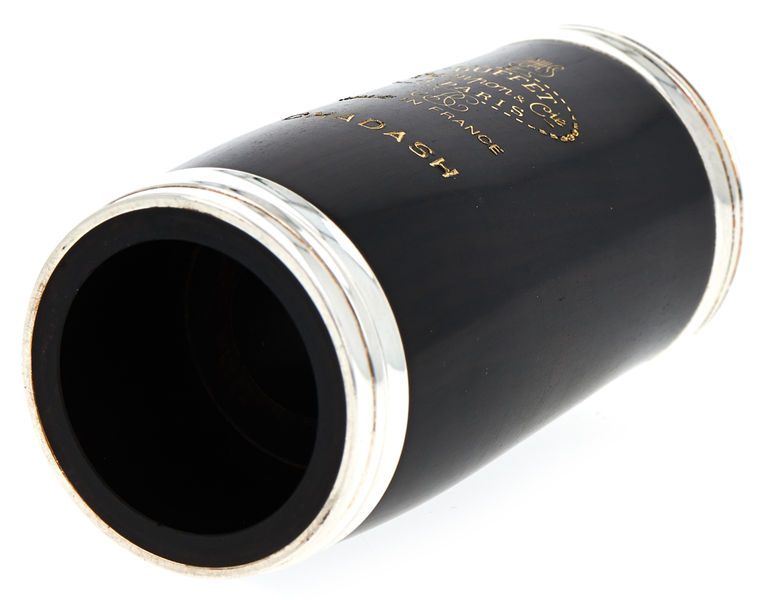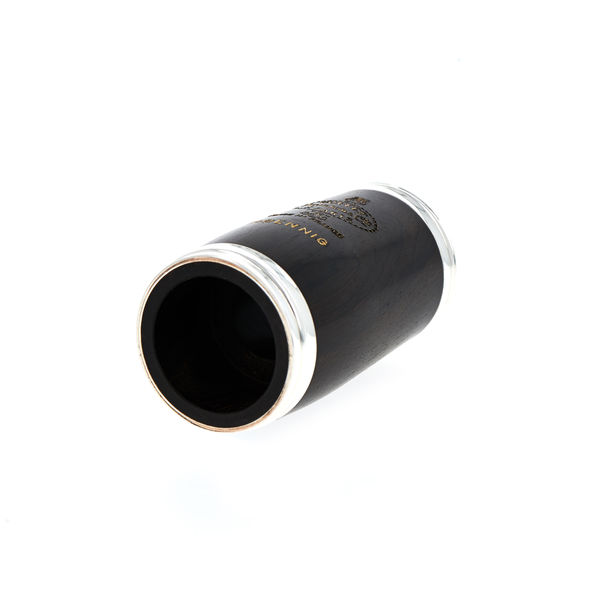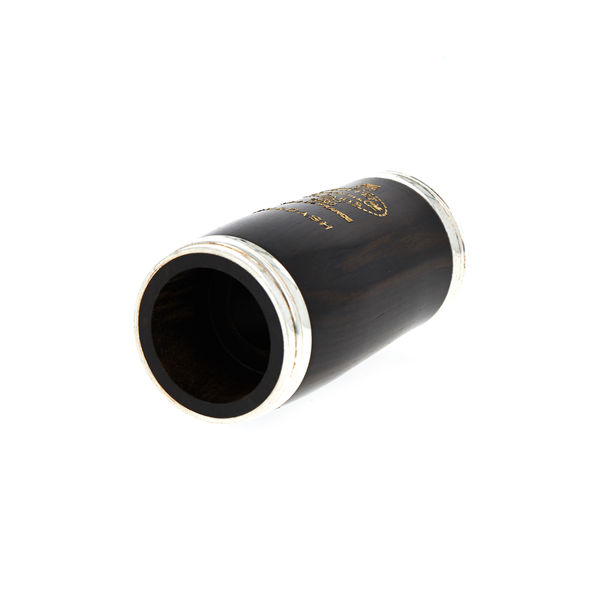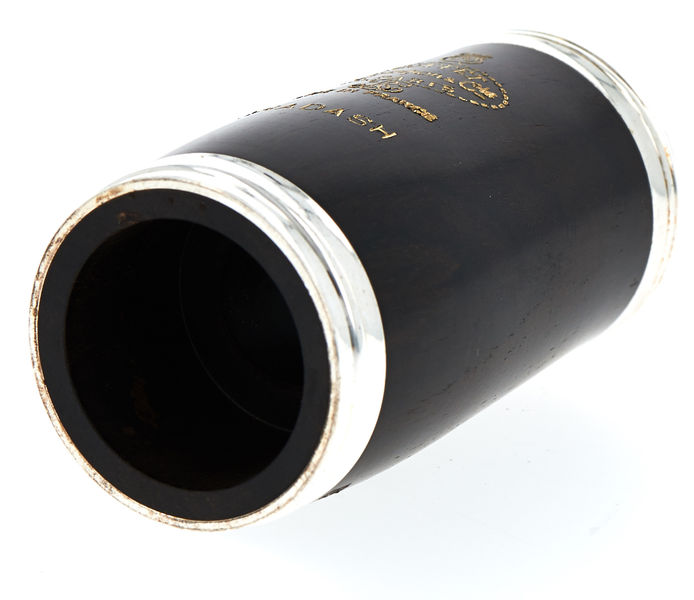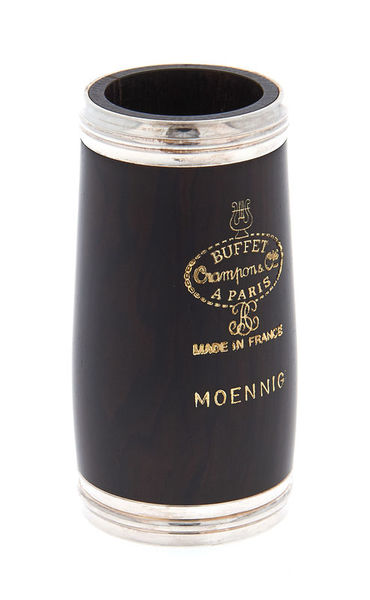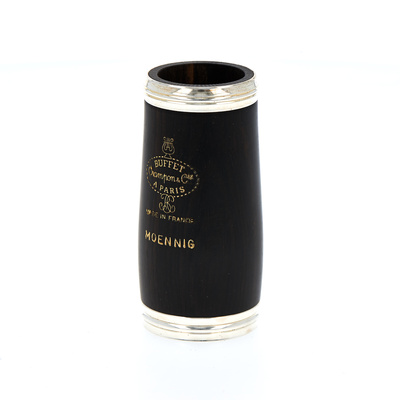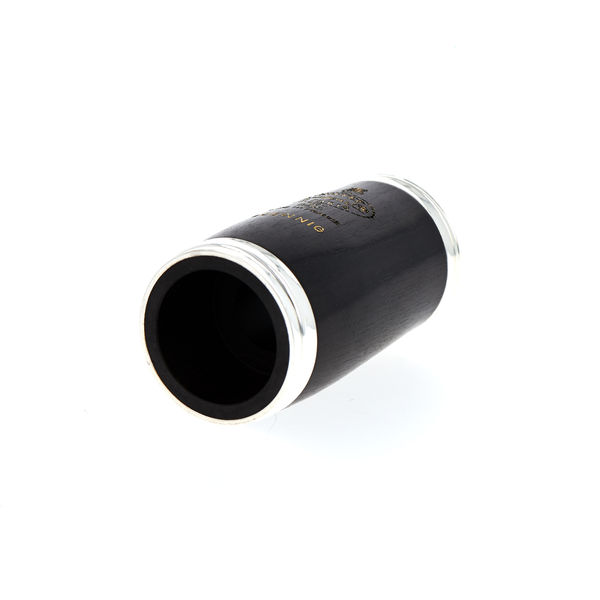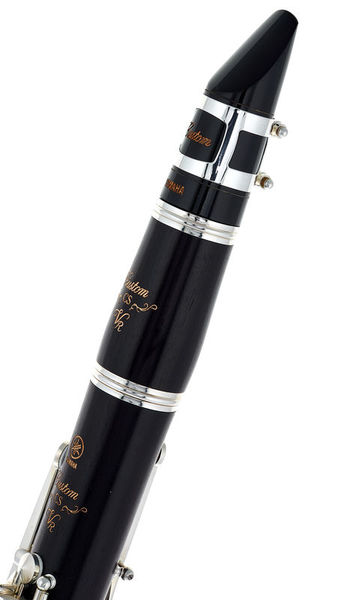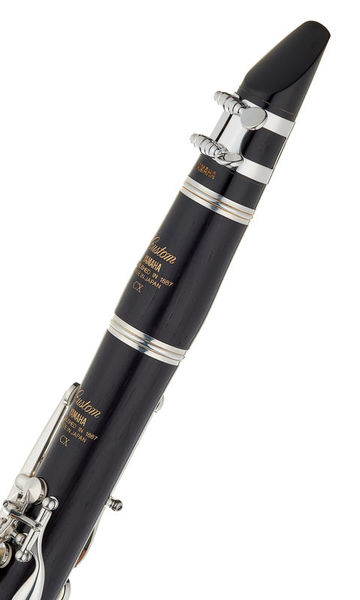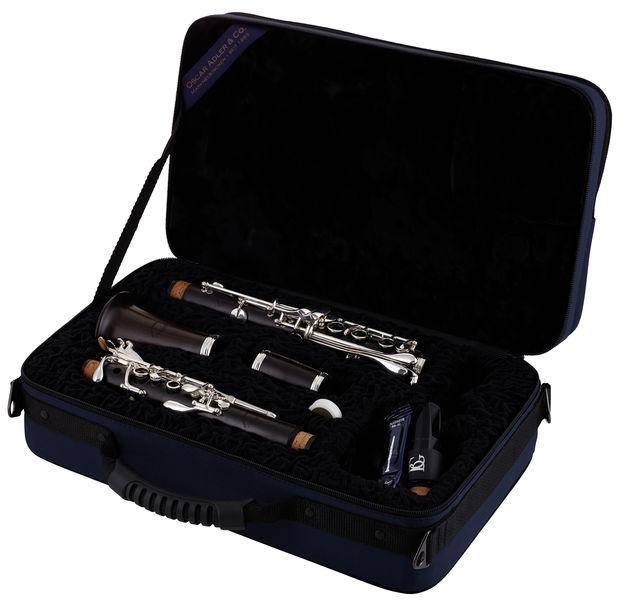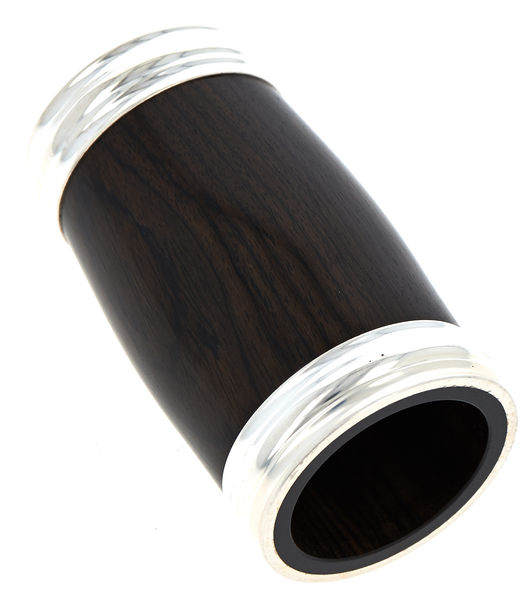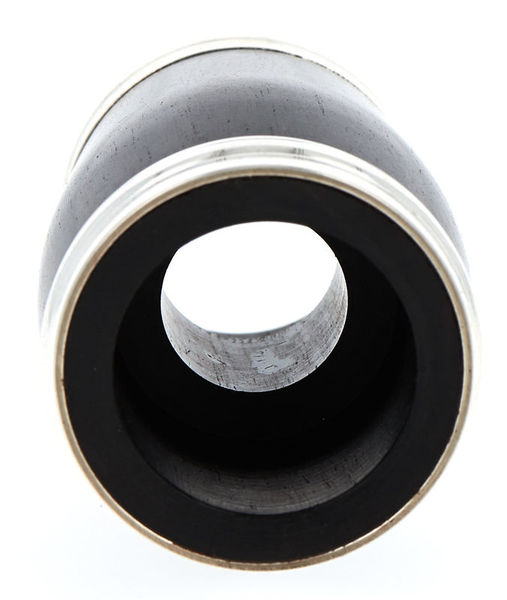Clarinets
View all CategoriesDisplaying 151-176 of 176 products
Martin Foag Bb- Metallklarinette 174T B/S
Bb Metal Clarinet
Model 174T B/G, German system, 17 Keys, 4 Rings, Body made from brass, Brilliant clear sound, Body with black lacquer, keys with galvanised silver...
Buffet Crampon Chadash Barrel 66mm Bb-Clar.
Boehm Bb Clarinet Barrel
66 mm, Made of grenadilla wood (Dalbergia melanoxylon), With silver-plated rings, Made by Mr. Chadash in USA
Martin Foag Bb- Metallklarinette 174T B/G
Bb Metal Clarinet
Model 174T B/G, German system, 17 Keys, 4 Rings, Body made from brass, Brilliant clear sound, Body with black lacquer, keys with gold lacquer,...
Buffet Crampon Moennig Barrel 63mm PRT-Bb-Cla
Moennig Boehm Bb- Clarinet Barrell
Suitable for Prestige clarinet, This bulb has a modified cone and tapers downwards, which gives the clarinet a little more resistance and the tone...
Selmer Récital Bb-Clarinet 18/5
Bb Clarinet
Boehm system, Eb jack, Unstained grenadilla wood (Dalbergia Melanoxylon), A= 442 Hz, Silver plated mechanism, 18 Flaps, 5 Rings, 2 Barrels,...
Buffet Crampon BC-1150GL-2-0 Bb-Clarinet
Bb Clarinet
Tosca series, With Eb lever, With low-F improvement, Boehm system, Completely from Greenline, Silver-plated key system, 19 Keys and 5 rings,...
Buffet Crampon Chadash Barrel 67mm Bb-Clar.
Boehm Bb Clarinet Barrel
67 mm, Made of grenadilla wood (Dalbergia melanoxylon), With silver-plated rings, Made by Mr. Chadash in USA
Selmer Signature Bb-Clarinet 18/5
Bb Clarinet
Boehm system, Eb jack, Unstained grenadilla wood (Dalbergia Melanoxylon), A= 442 Hz, Silver plated mechanism, 18 Flaps, 5 Rings, 2 Barrels,...
F.A. Uebel Classic Bb-Clarinet
Bb Clarinet
Made of grenadilla wood (Dalbergia melanoxylon), Boehm system, 17 Keys, 6 Rings, Undercut tone holes, Silver-plated nickel silver key system
Buffet Crampon Chadash Bb-Clarin. Barrel 64mm
Boehm Bb Clarinet Barrel
64 mm, Made of grenadilla wood (Dalbergia melanoxylon), With silver-plated rings, Made by Mr. Chadash in USA
Buffet Crampon Moennig Barrel 64mm PRT-A-Clar
Moennig Boehm A-Clarinet Barrel
Suitable for Prestige clarinet, Barrel with a modified taper - it gets narrower towards the bottom, which gives the clarinet a bit more resistance...
Yamaha YCL-CX Clarinet
Bb-Boehm Clarinet Custom Series
Patched, conical tone-holes, Undercut, Open French sound, Silver-plated key system, Grenadilla wood body (Dalbergia melanoxylon), 17 Keys, 6 Rings,...
Buffet Crampon Tradition Bb- Clarinet New
Bb- Clarinet
New model, Boehm system, a'= 440/ 442Hz, African grenadilla wood body (Dalbergia Melanoxylon), Cylindrical bore, 18 Flaps, 5 Rings, Eb- left-hand...
Buffet Crampon Moennig Barrel 68mm PRT-A-Clar
Moennig Boehm A Clarinet Barrel
Suitable for Prestige clarinet, Barrel with a modified taper - it gets narrower towards the bottom, which gives the clarinet a bit more resistance...
Buffet Crampon Moennig Barrel 64mm PRT-Bb-Cla
Moennig Boehm Bb- Clarinet Barrel
Suitable for Prestige clarinet, This barrel has a modified cone and tapers downwards, which gives the clarinet a little more resistance and the...
Yamaha YCL-CSV R Clarinet
Bb-Boehm Clarinet
Custom series, 17 Keys, 6 Rings, Integral, conical tone-holes, undercut, Robust, lively sound, Heavily silvered mechanism, Made of grenadilla wood...
Buffet Crampon RC Prest. Barrel 66mm Bb-Clar
Boehm Clarinet Barrel
RC Prestige, For Bb clarinet, Made of grenadilla wood (Dalbergia melanoxylon), With silver-plated rings
Yamaha YCL-CX-E Clarinet
Bb-Boehm Clarinet Custom Series
Patched, conical tone-holes, Undercut, Open French sound, Eb lever on the left, Silver-plated key system, Grenadilla wood body (Dalbergia...
Buffet Crampon ICON 65mm barrel gold
Barrel for Bb or A Clarinet
Made of grenadilla wood (Dalbergia melanoxylon), Gold-plated rings
Oscar Adler & Co. 911 Bb-Clarinet Boehm
Bb Clarinet
Boehm system, 17 Keys, 6 Rings, 65.0 mm Barrel, High-gloss silver-plated mechanics, Made of aged grenadilla (Dalbergia melanoxylon), GORETEX pads
Yamaha 56mm Barrel for Clarinet 457
Barrel for Clarinet
For Yamaha clarinets with German system, Grenadilla wood
Oscar Adler & Co. 912 Bb-Clarinet Boehm
Bb Clarinet
Boehm system, 18 Keys, 6 Rings, Eb lever, 65.0 mm barrel made of grenadilla wood (Dalbergia melanoxylon), High-gloss silver-plated mechanics,...
Buffet Crampon ICON Clarinet Bell black
Clarinet Bell
Optimised flow and sound properties, Made of grenadilla wood (Dalbergia melanoxylon), Without bell ring, 30% Lighter than a traditional buffet...
Buffet Crampon ICON 67mm barrel black
Barrel for Bb or A Clarinets
Made of grenadilla wood (Dalbergia melanoxylon), Black nickel-plated rings
Oscar Adler & Co. Clarinet Barrel 57,5mm
Clarinet Barrel
From long-aged grenadilla (Dalbergia melanoxylon)
Buffet Crampon ICON 67mm barrel gold
Barrel for Bb or A Clarinet
Made of grenadilla wood (Dalbergia melanoxylon), Gold-plated rings
As one of the most important instruments in any orchestra, the clarinet has been center stage, literally, in orchestras from the time of Mozart.
As a big fan of clarinets, Mozart wrote many important solo works for clarinettists that gave rise to its popularity.
From its first development in the late 1600s, the clarinet was continuously refined, by adding more keys to improve its range and tone for clarinettists, for many years. The clarinet truly has evolved throughout history into the magnificent instrument we see today.
Home, Home On The Clarinet's Range
The perfection of the bass clarinet by Adolphe Sax, inventor of the saxophone, in the mid-1800s was important because it added yet even more range to the clarinettist's repertoire.
As a woodwind instrument, the clarinet has an incredibly wide range. It contains 18 holes - six are covered by the clarinettist's fingers and other 12 are covered by keys. A clarinettist determines the pitch of the instrument's tone by covering the holes in various ways.
Believe it or not, there are thirteen different types of clarinets. However, most orchestral clarinettists can be found playing B-flat and A versions. Whereas the instrument used to be made of wood, many today are made with ebonite, a hard, black rubber.
Top makers, including Yamaha, Bonneville, Gemeinhardt, and Armstrong continue to create incredible single-reed clarinets for avid clarinettists around the world.
With their ever-so smooth and always even sound, clarinettists know why this small instrument is always a big hit - from orchestras to the Big Band, marching bands to jazz bars, the clarinet is always a winner.
An Overview Of Clarinets
Clarinets are one of the most versatile musical instruments in the woodwind family.
A clarinet is capable of producing amazingly rich music and it has been part of many orchestras and musical scores.
Because a clarinet is very small and lightweight, it is the ideal musical piece for young aspiring clarinetists.
Although a relatively new instrument compared to the harp or guitar, the clarinet nevertheless has a rich history behind it.
Looking Back At The History Of Clarinets
J.C. Denner invented the first clarinet in the 1600's. Early versions only had two keys and were made in boxwood.
The instrument became popular when Mozart wrote a clarinet concerto. After that, many other composers wrote music for it. These include musical luminaries such as Brahms, Von Weber and Beethoven.
It was only in the 1850s that the clarinet was redesigned into the modern configuration of 17 keys. Today, there are a number of variants.
The E-flat clarinet is about 14 inches long. Then, there is the giant contrabass, which is nearly as tall as a person.
The most popular, however, is the B-flat clarinet. Professional clarinetists often prefer the larger and more powerful varieties.
A clarinet can be relatively inexpensive, making it ideal for budding clarinetists. A plastic one can be bought for two hundred dollars. Wood is superior and produces a more rounded and professional sound.
However, a wood clarinet easily wears out if not cared for, so it is best to buy a plastic one for beginners.
Bass Clarinets - Heavy Body, Low Sound
The bass clarinet, a wooden wind instrument using a single reed, was invented in late 18th century though there is some confusion over the bass. The two names credited with the development of this member of clarinet family are G. Lott (1772) and Heinrich Grenser (1793).
Bass clarinets were initially used in orchestras and later came to be used in bands. More recently, these clarinets have been treated as a solo instrument.
But this clarinet's main role is to boost bass levels in a small ensemble.
Bass Clarinets Floor Their Players
The bass is made from granadilla wood or African Blackwood and is around four and a half feet (1.37m) high. Some basses have a folded body. This makes them look like bassoons. However, the majority of clarinets are straight-bodied with a small upturned bell. On account of their weight, basses are fitted with a floor stand.
The bass is sometimes mistaken for a large saxophone. This is because clarinets are used as second or third instrument by saxophonists. Very few musicians have used these clarinets exclusively.
Each bass has a cylindrical bore that runs through the clarinet's body to produce the dark tone and low pitch associated with all clarinets.
It is important that the clarinet mouthpiece is fitted securely in the bass's neck. Also, as a rule, the bass should be swabbed after each use, and stored in a case to avoid clogging the clarinet pipe with dust.
The two most common brands of clarinet are Yamaha and Selmer and Tchaikovsky's "Dance of the Sugar Plum Fairy" is the bass's masterpiece.


